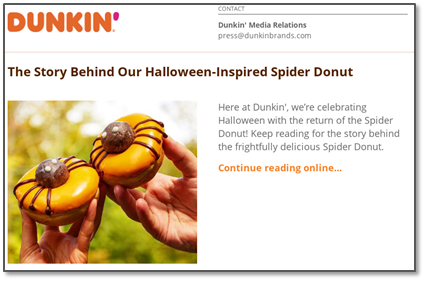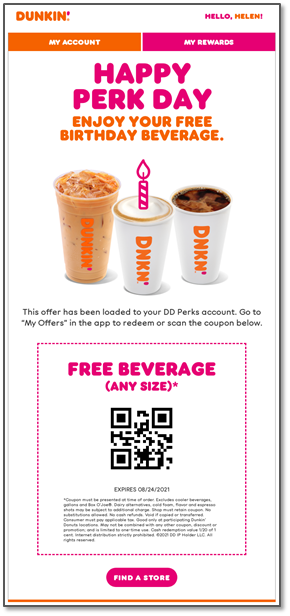In my first Only Influencers post, 8 Tips to Turn Subscribers into Loyalists, I shared tactical advice on how to use the power of email to help your subscribers become loyal customers.
Each tip is something you could employ quickly to encourage your email subscribers to connect with your brand and to keep building on that connection until your brand is the first they turn to every time.
So, what if you’re already doing all these things with your loyalty program but you’re still not seeing the needle move? You’re promoting your program regularly, you are offering easy ways to share data, and you help customers see the benefits of joining. You make it easy, fun, and rewarding to join and simple to earn and redeem benefits. So, what gives?
If that’s the situation you’re in, it’s time to take a step back and look at a broader issue. What’s possibly missing could be empathy – understanding what your customers are feeling when they are seeking out or using your products, and how your products affect their lives. This insight can help you shape your messaging to reflect their point of view.
Empathy for 2022 and beyond
Look at your emails – not just your loyalty program messages but every email you send, from your promotional campaigns to transactional and lifecycle messages, as your recipients might. Is your primary message “Buy this now?” Or is it “How can we help you?”
I’m not talking about warm-fuzzy marketing that adds cute puppies, hugging emojis, and squishy sentimentality to a standard promotional campaign. It’s more fundamental than that.
Yes, you’re in the business of making money. But empathy-focused marketing holds that you’ll make more money if you get where they’re coming from and show it in the goals you set for each campaign.
This means focusing less on “What can I talk you into buying from me?” and more on “How can I help you solve your problem or achieve your goal?”
Empathy has evolved: empathy became a watchword in 2020 thanks to the COVID-19 pandemic and the social, cultural, and economic upheavals that came in its wake. Alert marketers perceived how quickly the world changed and responded fast to change direction, tone, and content in their email campaigns.
Now, as 2022 unfolds, we need empathy to guide our marketing strategies and tactics as much as we did when 2021 dawned. It might be in a different way, one that reflects where we’ve been able to return to something like our previous lives as well as where we have been changed permanently. Empathy-focused marketing isn’t just a temporary pivot. It’s how we market now, and maybe how we should have been marketing all along.
If your customers love, are connected to, and have an affinity for your brand, and trust it to deliver the price and quality they want, and if they can see themselves in the messages they receive from you, the halo effect of that trust and goodwill should extend beyond your email to your loyalty program. Customers will be more motivated to join it and, by extension, to stick with your email program. That drives two benefits:
- Higher Revenue and Profits, both from increased sales and reduced acquisition costs
- Lower Churn, which keeps your database fresh, reduces future acquisition costs, and benefits everything from data-driving lifecycle messaging to cleaner email lists.
3 examples of empathy-driving email marketing
For many companies, moving to a mindset that focuses on empathy over exploitation will require fundamental changes on the same scale as turning the Titanic before it hits the iceberg.
Instead, you can start with small changes, like updating the tone or language you use in your email communications. Then, move on to more substantial strategic changes that speak to customer motivations.
These two examples show how you can get the empathy train rolling just by shifting the focus in your emails or adding a new messaging stream
1. Add empathy-focused emails to a promotional stream
An email program built on high frequency – four campaigns or more a week instead of one or two a month – doesn’t scream “empathy” in these days of crowded inboxes.
But it has one big benefit. You have much more leeway to send different kinds of campaigns, and more flexibility in the kinds of messages you send to support your program goals.
This Works, a UK-based beauty and personal care brand, sends two email campaigns a week on average and more during the holiday shopping season. Early in December 2021, it sandwiched this email between its regular promotional campaigns:

The subject line sounds like your mom wrote it: “Are you looking after yourself?”
But that simple phrase stands out in an inbox littered with FOMO-driven “blink and you’ll miss it” campaigns, especially to people who felt overwhelmed and underprepared.
Yes, the brand is selling products in this email. But it organizes its pitches according to how much time a customer has to take care of herself, from 30 seconds to 30 minutes. Now, that’s a meaningful selling point for overwhelmed customers and shows understanding.
2. Tell a story.
Storytelling helps your brand show its human face, build community with customers, and satisfy their curiosity about how your company operates.
Classic storytelling features people, such as customers or employees. Dunkin (as in “Donuts”) uses this tactic effectively to introduce new products with its “The Story Behind” series.

This example makes you want to know more about the story behind the confection. And if done well, possibly open future emails to see what’s next.
3. Rethink your rewards program.
Most loyalty programs are based on purchases – the more customers buy, the more you value and reward them. These rewards often come with a string attached, like discount coupons that matter only if your customers buy something else.
This tells customers their only value in your business model is how much money they spend. It makes sense in a traditional business model, but today’s customers are looking for other kinds of rewards and ways of earning them. The more interaction with your brand, the more potential you have to get zero-party data, the more you know what is important to them, how they want to communicate and their buying intentions.
For an example, I turned to Dunkin again, this time for its famous no-strings-attached birthday reward: a free drink, any size, no purchase necessary.

Dunkin customers don’t have to do anything but show the offer on their phones and pick a drink. They don’t have to spend a certain amount or visit a specific number of times to earn the reward – just share their birthday.
Besides offering a good freebie, your loyalty program could use different criteria for defining high-value customers.
Activities like downloading and sharing content, filling out quizzes and surveys, attending in-person or online events, and reviewing purchases create useful data points for your brand.
So, you should reward customers for them, and use email to promote these alternatives, their benefits and rewards for participating.
Personalization matters: also, note the unobtrusive but still visible personalization in the upper right corner. You don’t have to personalize every email to be empathetic, but using the data you already have to reinforce the connection is a good first step. This would require that you keep your information current with an email hygiene and data validation process.
Conclusion
Let’s not pack away our empathy-focused marketing with our 2021 annual reports. The world hasn’t returned to the norms of 2019, and for many brands and consumer groups, what we euphemistically called “the New Normal” is now just the normal.
As you plan your strategy and campaigns for 2022, look at ALL your data to see what it tells you about your customers and how you can use your products and your platform to help them solve problems and achieve goals.
People want to shop with brands that understand them and know them as more than the sum of their purchases.
 Affiliate Marketing
Affiliate Marketing Automotive
Automotive eCommerce and Retail
eCommerce and Retail FinTech
FinTech LeadGen
LeadGen Nonprofit and Political
Nonprofit and Political Payments
Payments Technology Platforms
Technology Platforms Tourism and Hospitality
Tourism and Hospitality



